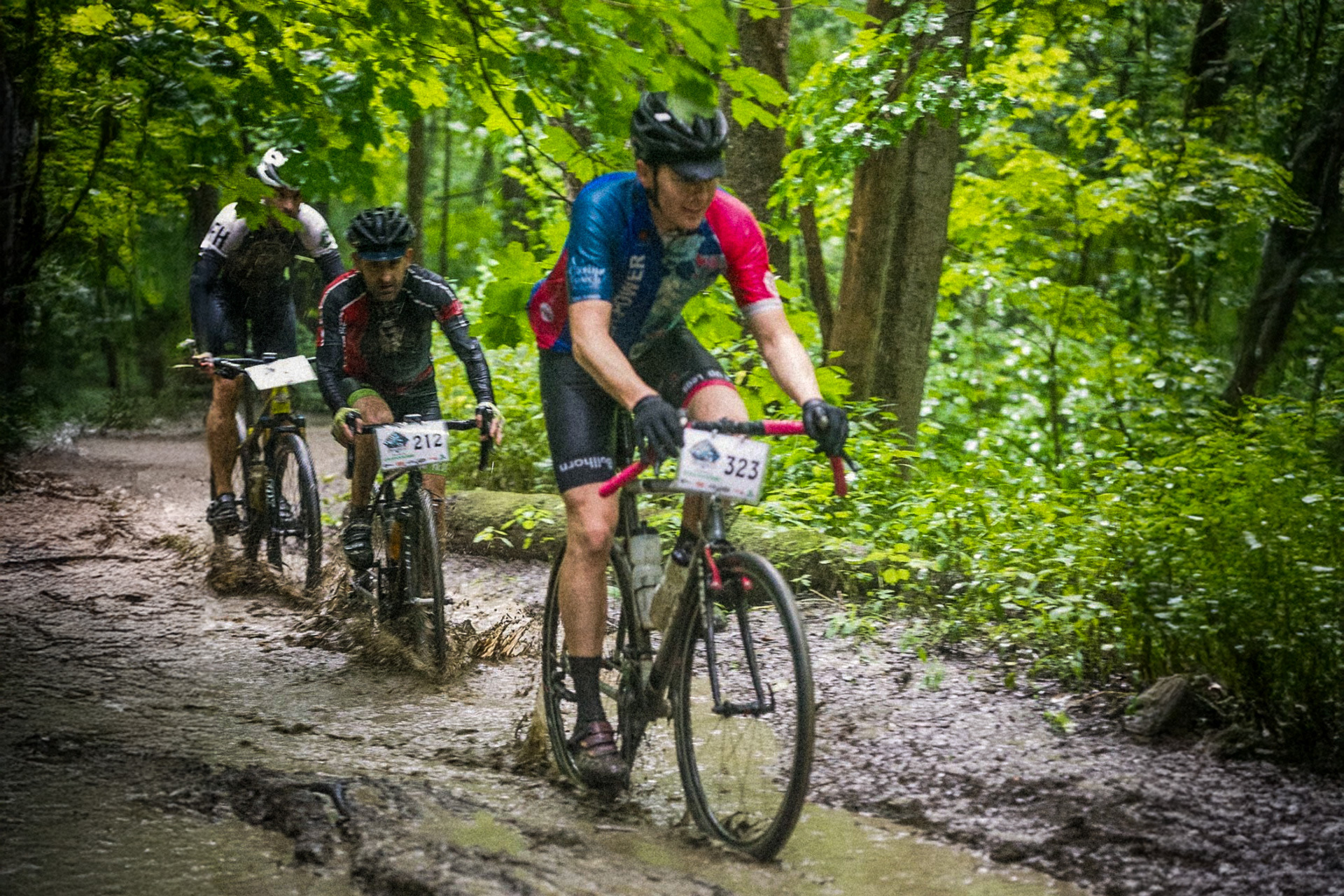
Brand positioning and naming architecture: Surly Bikes
This article first appeared on Trail Names, the Substack by Mason Colby on naming in the outdoor industry.
Bike shops in the early 2000s were wild. The only place and time when you could get an espresso and tips on how to shave your legs from a guy with five days of stubble and grease-stained fingernails.
Bicycle racing was on TV, competing with baseball. Lance was winning the Tour de France. Everything in the industry was lighter, faster, more aero, more carbon.
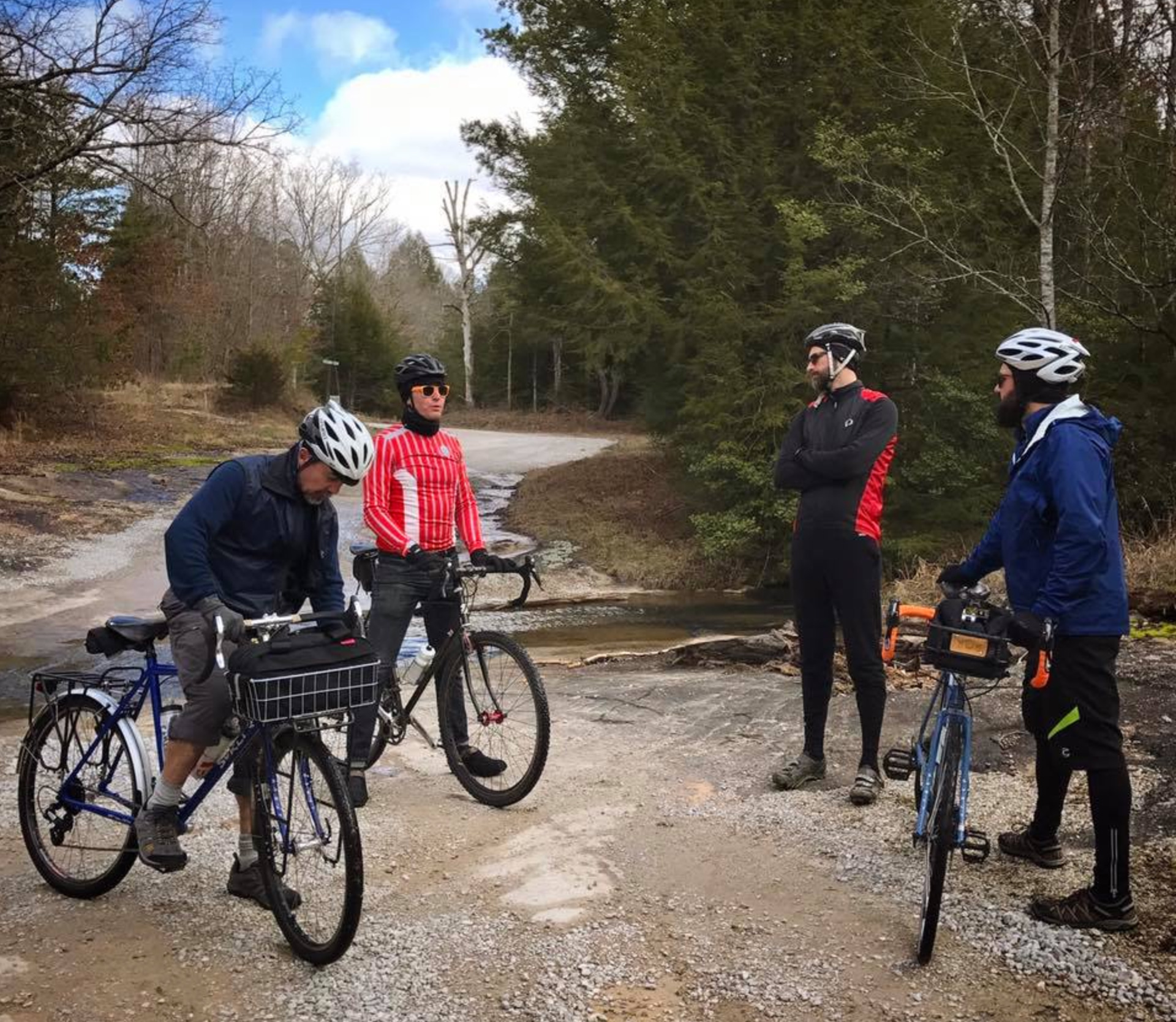
Positioned to lead a subculture
But that wasn’t the only thing going on. Critical mass rides were growing in popularity. There were pockets of fixed-gear bike messengers around the country; hard-court bike polo emerged on unused tennis courts and highway overpasses, and underground races spread from city to city. Across the US, urban planners began inserting bike lanes and multi-use paths into long-term plans.
Surly Bikes was founded against this backdrop. In branding speak, they were counter-positioned - not just against the big companies, but against an industry ignoring this nascent movement. While businesspeople ran most bike companies, cyclists ran Surly, and they made the bikes and parts that suited their needs.
Because of that, their products screamed their positioning. When the trend was adding gears, they made a single speed. As tires got narrower, they made room for wider tires. As everything got lighter, their steel bikes were heavy but durable. And as other bikes got increasingly specialized, they made bikes that could adapt to just about anything.
Punks had the Sex Pistols, slackers had Nirvana, and people who loved bicycles but not the industry, who were empowered by practical bikes that worked forever, had Surly. And Surly became cool.
Brand Name
I first heard of Surly when I took a job at a local bike shop in 2004. Surly didn’t sound like other bike manufacturers. The word means bad-tempered or unfriendly. Synonyms are crabby, grouchy, grumpy, cross. I have worked on enough projects to know that it is difficult to pitch a name with so many negative attributes.
But they owned it. While many business owners would balk at the negativity, the Surly team wasn’t just selling to a subculture; they were part of it.
For example, I made the trip to Minnesota in February for the release of the Pugsley, one of the first commercially available fat bikes (bikes with tires up to 4 inches wide intended to ride on snow or loose sand). They hosted a race for the launch, but this wasn’t your average race. They lit a monstrous bonfire on the middle of a frozen lake. The racecourse was a figure-8 that went around the fire. There were wrecks, riders ramping off other riders, and a steady supply of new volunteers thanks to the cases of beer scattered around the shore. If it was grumpy or crabby, it was also fun.
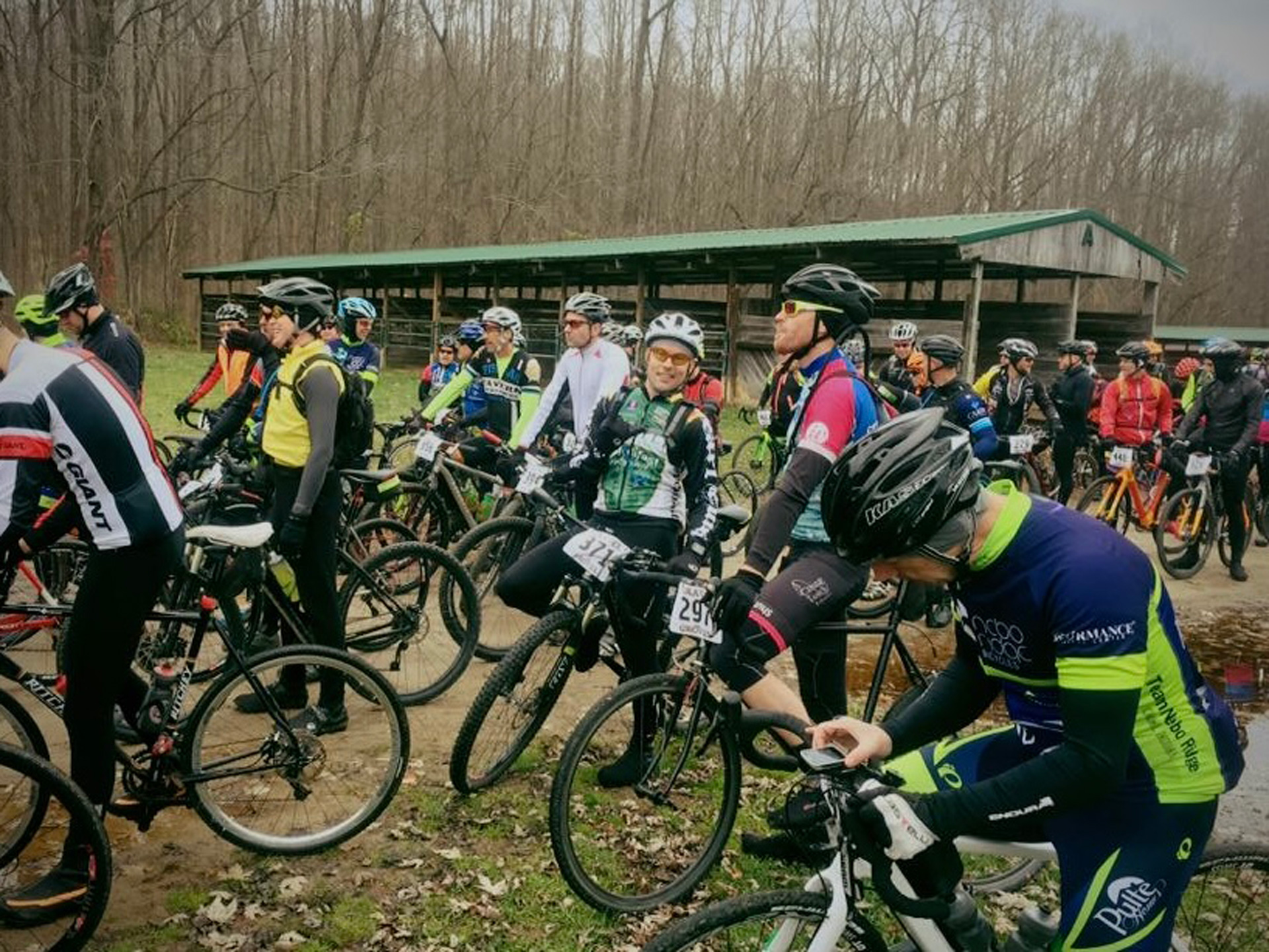
Product names
The brand name was bold, but the model names stood out more. The Steamroller, a name that sounds heavy and slow, was a single-speed urban commuter. Named after an illegal hockey move, the Cross-Check was a road bike with room for wider tires, something common to nearly every road bike now.
And my favorite, the Karate Monkey, released in 2002, was one of the first mountain bikes to use a larger diameter wheel, which is now an industry standard. I got mine in 2005. Was the name appropriating, or inappropriate? They certainly didn’t care.
Here are a few other model names that reinforce Surly’s brand position.
+ Big Dummy
+ Bridge Club
+ Grappler
+ Ice Cream Truck
+ Krampus
+ Lowside
+ Midnight Special
+ Moonlander
+ Ogre
+ Straggler
+ Wednesday
Color names
The model names are quirky, but the color names got my attention. They are the real magic. Surly didn’t take themselves seriously in a painfully serious industry. And the colors best illustrate this point.
Black
In an interview, a Surly employee told a story about a customer who was concerned about getting touch-up paint for his bikes. He didn’t know how to match all the variations of black. After all, they have had the following colors:
+ Pitch Black
+ Hi-viz Black
+ Rainbow in the Dark
+ Darque Black
+ Stretch Pants Black
+ Blacktackular
The Surly rep explained that while they have different names for black, they are all the exact same color. And you don’t need to worry about paint. They picked that black so you could fix any scratches with a Sharpie. Genius. The color black they chose and its various names reinforce who they are.
Brown
I rode my Skidmark (yes, that is that actual color) Karate Monkey for almost ten years in a dozen different set-ups. I sold it, immediately regretted it, and bought another one. My new bike was Spraytan, a translucent orange-brown that was a joke in 2015. It’s not so funny anymore. But I still love the bike and ride it every week.
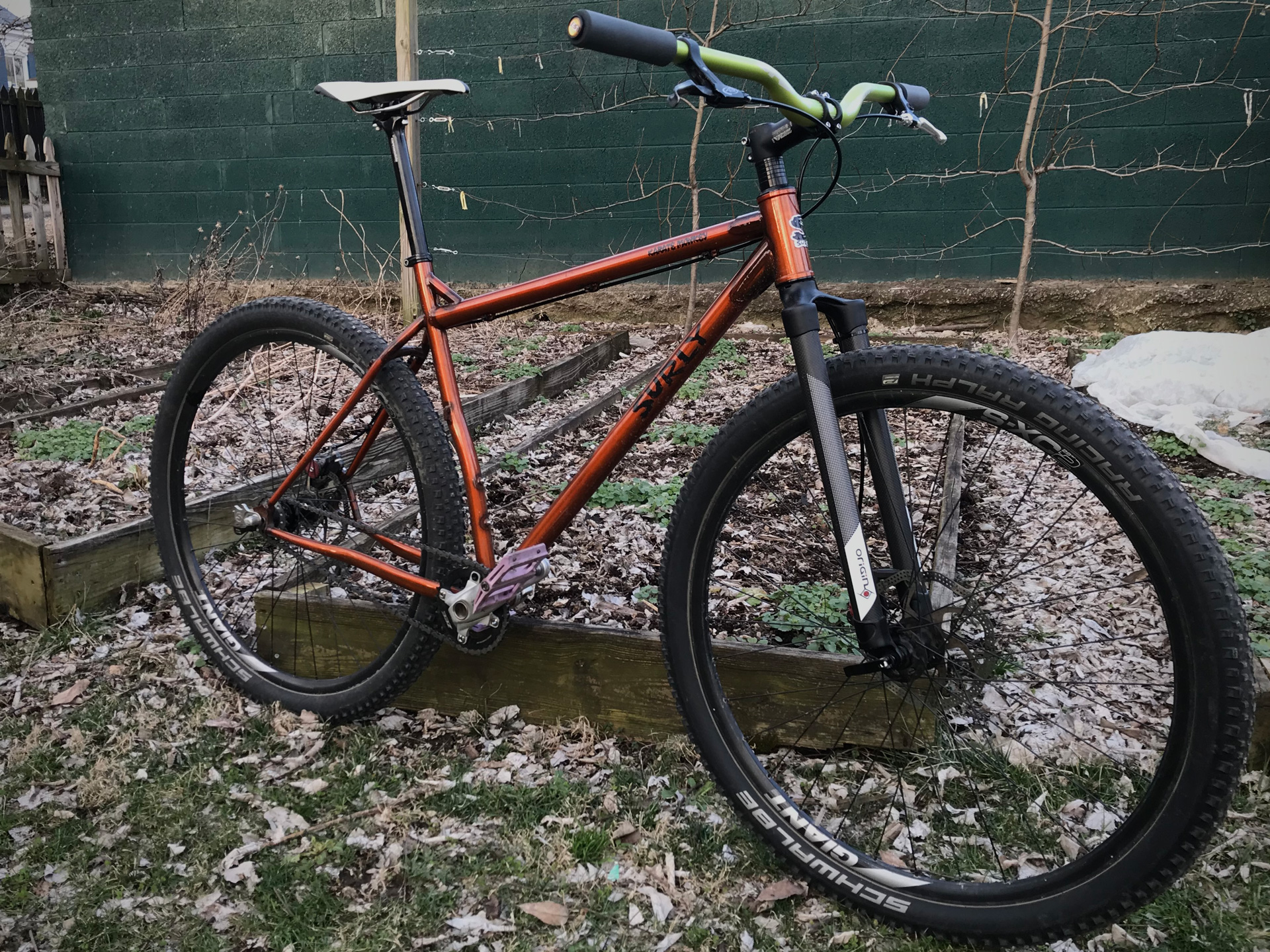
Grey
Misty Mountain was named in Surly’s Lord of the Rings era, along with the Ogre and the Troll bike models. But greys are noteworthy because they made the color Grey Sweatpants. Evocative and weird. Comfortable, worn-in. It’s a great color name you won’t find at Sherwin-Williams.
Purple
Could you distinguish between Bruised Ego, Purple Dust Bunny, or Taro Milk Tea? Neither could I. But somehow, I still have a sense that Bruised Ego is much darker than the other two.
Red
Fermented Plum is a crossover color. It could be red, or it could be purple. Salmon Candy is as evocative as it is gross. Same with Chum Bucket, another early color. It smells stronger than the visual.
Blue
Blue bikes are boring and don’t deserve good names. As if to drive the point home, one of their blue names was Blue.
Green
But what is it about green? I nearly bought a used Hospital Foam Cross-Check, but I had just started Bullhorn and was broke. I longed for a Meth Teeth Steamroller. Moonlight Swamp and MRE are strong color names, but pedestrian in comparison.
I could go on, but this brings up a tough question for me as someone who identified with the subculture typified by Surly. As Surly has become more mainstream, and its counter-positioning impossible to maintain, have the names become boring? Which is another way of asking if I am becoming boring. If what I love is becoming irrelevant.
They have been doing this for almost 30 years. They now offer the colors Eggplant, Apple Red, Sage, and Fool’s Gold. Real snoozers. Lost at Sea and Prickly Pear are anemic. Snow Mold doesn’t get there.
So, the answer is yes. We are both getting a little more boring. I don’t ride a fixed-gear bike to work anymore. I drive a minivan so I can take a crew to soccer practice. But, then again, Surly now offers the Big Easy, a $5500 electric bicycle-equivalent to a minivan. So, what’s next?
Bike culture has changed. Brands like Sklar, Crust, and Squid exist because of the room Surly created. E-bikes further democratize bicycles in a fitness-obsessed industry. The subculture led by Surly is now mainstream. Not because the naming has become more palatable, but because their product innovation predicted the future. So, for both of our sakes, I hope they don’t fade away. I hope they reinvent themselves with the next bold decision to make something great. Because I intend to, minivan or not.

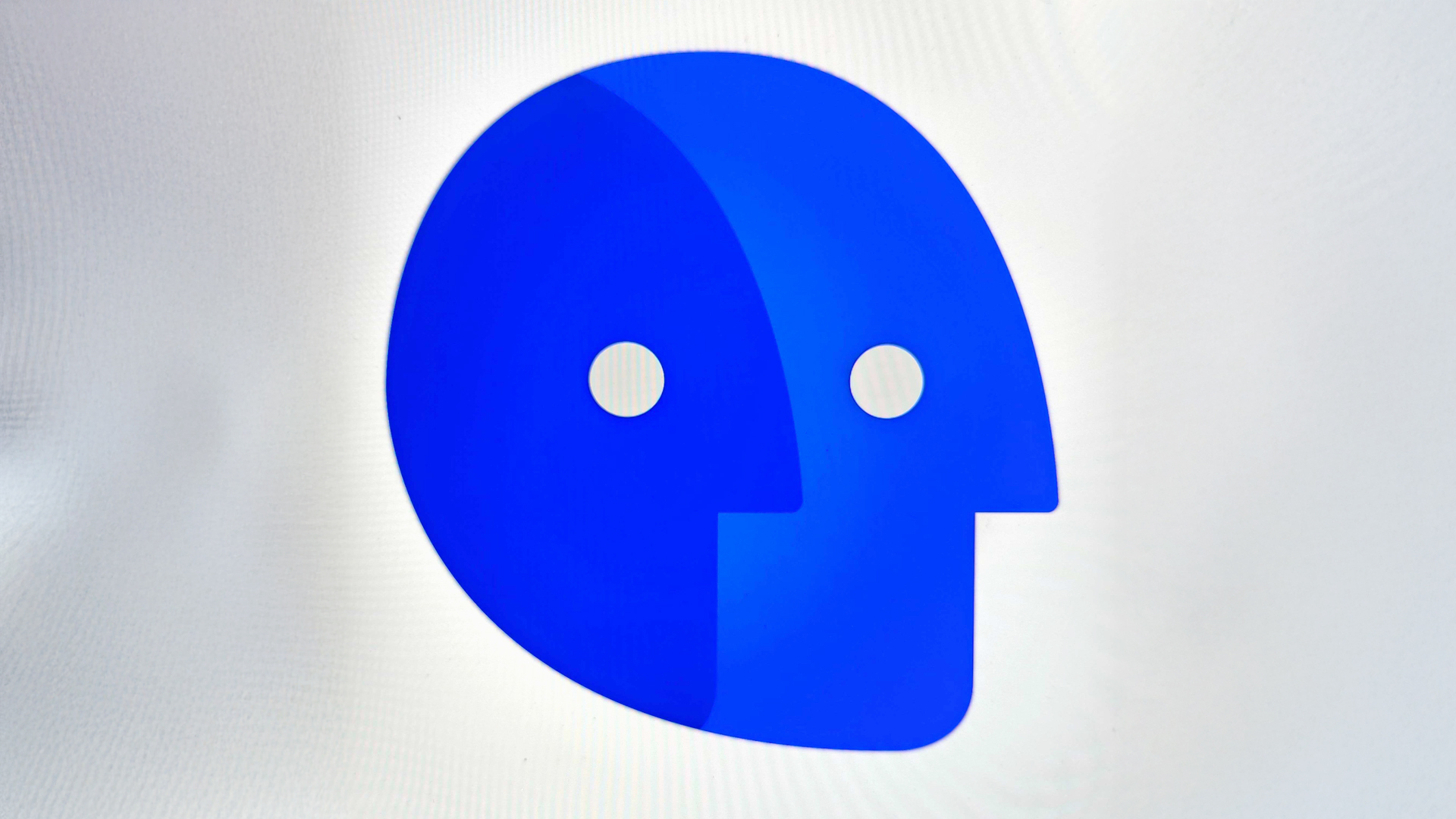

.jpg)